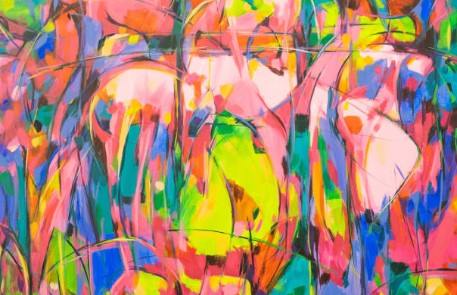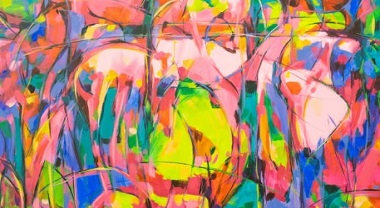Copyright Protection of Modern Art
The primary goal of copyright law is to safeguard the interests of creators of original, publishable works. The purpose of copyright protection is to make sure that the artist reaps the rewards of creating their original work and that no one else benefits unfairly from it. It supports the idea that proper effort receives proper recognition and rewards. The Copyrights Act of 1957 regulates copyright law in India. The statute was modified in 1999 to include the necessary provisions of the Berne Convention, which safeguards individuals’ copyright rights worldwide and establishes guidelines for their defence.

What Constitutes Art
Any creative works are under the purview of copyright law, according to WIPO. These creations are regarded as artistic. As a result, visual arts including paintings, sculptures, literary works, as well as video, plays, and music, are regarded to be works of art.
Copyrighting Art
Subject Matter of Work
Subject matter of a copyright is covered under section 13 of the Copyrights Act 1957 (hereby referred to as the Act) which subsists of the following:
- Literary Work
- Cinematographic Work
- Sound Recordings
A copyright’s primary topic is what it protects and the standards by which it is protected. Artistic creations are included in the subject matter of literary works. The clause requiring the work’s originality is the primary condition for copyright protection of any work.
In the most recent case, Marico Ltd vs. Mrs. Jagit Kaur, it was determined that in order for a work to qualify as a literary work under Section 13 of the Act, it had to be unique rather than of higher quality.
Originality of Subject matter
Only if the written or artistic creation is original can a copyright be recognised. According to the Macmillan & Co. v. Cooper case, a work does not have to be entirely unique in order to be protected by copyright; rather, there needs to be some effort put into it and it cannot be a carbon copy of another person’s work. The theory of the sweat of the brow, which holds that if the author made an effort to think of the work, it is unique, was developed in the case of University of London Press Ltd. v. Universal Tutorial Press Ltd. Therefore, literary translations, abridgements, and adaptations are covered under copyright laws.
The issue of two persons producing similar work is not a barrier to it becoming the topic of literary writing. Even if two authors produce similar literary works independently, each will be covered by copyright protection. This is because of their creativity and the effort they put into it. Here, the idea of natural rights is relevant.
Natural rights/ Labour theory
All forms of intellectual property are derived from the fundamental principles of diligence, perseverance, creativity, artistry, and uniqueness. According to this theory, the idea that all intellectual property is created through labour-intensive processes and has a natural right to protection stems from John Locke, who also claimed that any author should feel free to do as they please with their own creations. This idea gave rise to the theory of natural rights.
Modern Art
Forms of Traditional Art
From the 1960s through the 1970s, which includes several periods of Abstract Art, Impressionist, Post-Impressionist, Cubism, and Pop Art, is generally considered to be the age of Modern Visual Art. Pop art and abstract art appear to be the two visual art forms that face the most copyright conflict. Additionally, when it comes to videos, we live in a time of social media where the platforms are made up of recreations and iterations of works. Thus, the issue of uniqueness is raised.
Abstract Art
Art that is based on the artist’s interpretation and the motivation behind the creation is called abstract art. One type of art that is exceedingly challenging to define is abstract art. The issue of sweaty brows arises when a canvas just contains a few splotches of paint or imprecise forms. Has an attempt been made in order for the author to profit from the same? Yes, even if it is impossible to explain, if a spectator is attracted to the line art’s arrangement or structure and wants to copy it or use a print of it, the creator or owner of the work must be given proper recognition and rewards. Modern art heavily relies on abstract art. The lack of organisation and ambiguity make the protection problematic even if the work is copyrighted.
According to section 13 (1)(a) of Copyright Act of 1957 copyright subsists in original literary, dramatic, musical and artistic works.
Section 2 (e) defines artistic works to mean:
- A painting a sculpture, a drawing (including a diagram, map, chart or plan), an engraving or a photograph, whether or not any such work possesses artistic quality;
- A work of architecture; and
- Any other work of artistic craftsmanship.
As a result, according to the Act’s Section 2(e) subsection(iii) provisions, artistic works may be protected by copyright regardless of whether they possess any artistic character. However, the issue of concept protection still exists.
This indicates that if an artistic work is abstract, regardless matter how abstract it is, it may be sold for a price in exchange, and if there are rewards to be had from the sale of the work, the
right to copyright will exist. The issue of copyrightable material for modern art that is object-based or based on a design still exists, though. The recreations of pre-existing things in and of themselves are protected by copyright, such as Andy Warhol’s Campbell’s Soup Can, which was the subject of recent legal disputes involving the artist Koons. In Blanch v. Koons Photographer Andrea Blanche filed a lawsuit against Koons for reinterpreting her image as an abstract painting. However, the Courts claimed that since Koons had seen the image in Allure Magazine. After using a fragment of the imagery from the advertising in his painting, Koons gave the image new significance in his 2000 piece Niagara. It was claimed to be “transformational,” and because the meaning of the borrowed work was changed in a tangible and original way, copyright was not violated. But novelty and originality are not the same thing.
Author of Copyright
Right of Author to Relinquish their Rights
Under section 21 of the Act, the author has the right to relinquish all their privileges under the copyright post informing the registrar of copyrights and these rights shall stop from the minute the same is done (no royalties or infringement etc.)
Ownership of Copyright
According to Section 17 of the Copyrights Act of 1957, the original owner of a work that has been copyrighted is the creator of the work.
Ownership under employment
The author of the work will however not have the ownership of the art in case they are employed under an authority. This was seen in the case of Thoman v. Manorama where the plaintiff worked as a cartoonist for a well-known magazine but quit after becoming well-known to work on his own. When they did this, they erroneously believed they could keep utilising the comics produced by Manorama, but because they were employed by the magazine and not the creator, the magazine controlled the copyright.
Therefore, there is no infringement as long as the work has not been replicated. Therefore, the term is protected since it is used in a similar way. Even modern art can be protected if the brushstrokes are distinctive, reflect a fresh idea, and lack resemblance. Appropriating such work would be illegal.
Photography
The rising craze of paparazzi poses a fresh conundrum. Singer Ariana Grande shared a photo in 2020 to celebrate the arrival of her new album by paparazzo Robert Barbera. The picture was released in Public Domain without permission, which is the issue with this. Since public domain works are not, by definition, the subject of copyright, the need of similarity for copyright infringement as stated in the instance of The Bridgeman Art Library and Ltd. v. Corel Corp. Hence the copyrighting of the same is contested, however the benefit reaped by the same is another factor for the placement of rights despite being ‘Art’.
Utilitarian Theory
A utilitarian hypothesis is one that is based on Bentham’s ideas and is optimal for society. This theory aims to make all IPR laws global such that they are very advantageous to the author and society as a whole. This is done as an inducement to adopt the theory. According to this view, incentives are necessary since more inventions that are publicised are seen to be better.
Criticism
The incentive to be provided to all IPR holders will back fire as the future payments will keep increasing hence stagnant pay is terrible incentive.
Ethic and Reward Theory
The separation of the IPR from the morality of society is followed in this theory. The IPR is treated as a: “an expression of acknowledgement and indebtedness to an author for doing more than society expects or feels that they are obliged to do.”
Most IPR create a morality on the reception of legal rights in the form of, copyrights and hence this theory propounds that the focus should be on the rights and not the morality.
Conclusion
The distinction between art and object is at the centre of the modern art debate. Fair play is a key issue in this situation. This is a reference to the animation component of the piece, which pertains to the idea that the art’s narrative cannot be compromised or rendered incomprehensible. Copyright can be applied to art if it can be sold. This division indicates a significant policy choice on what elements of a piece writers should be permitted to monopolise and what elements should be in the public domain so that others are free to build on them. Courts must look into the concept of creation of the separation between the personhood and the art.
Therefore, copyrights are required for every kind of work that may be sold or utilised for financial advantage. Regardless of the work’s creative merit, this is the case. The theoretical conversations that have been held on the topic provide a clear contrast between IPR and actual assets. The essential tenet of the copyright idea is that the property’s inventor should derive the most advantages possible from it; as a result, a comparison with valuable and lucrative assets is made. If there is no new element, this refers to imitations, tributes, or recreations.
Author: Arushi Guha – a student of Symbiosis Law School (Pune), in case of any queries please contact/write back to us at support@ipandlegalfilings.com or IP & Legal Filing.



